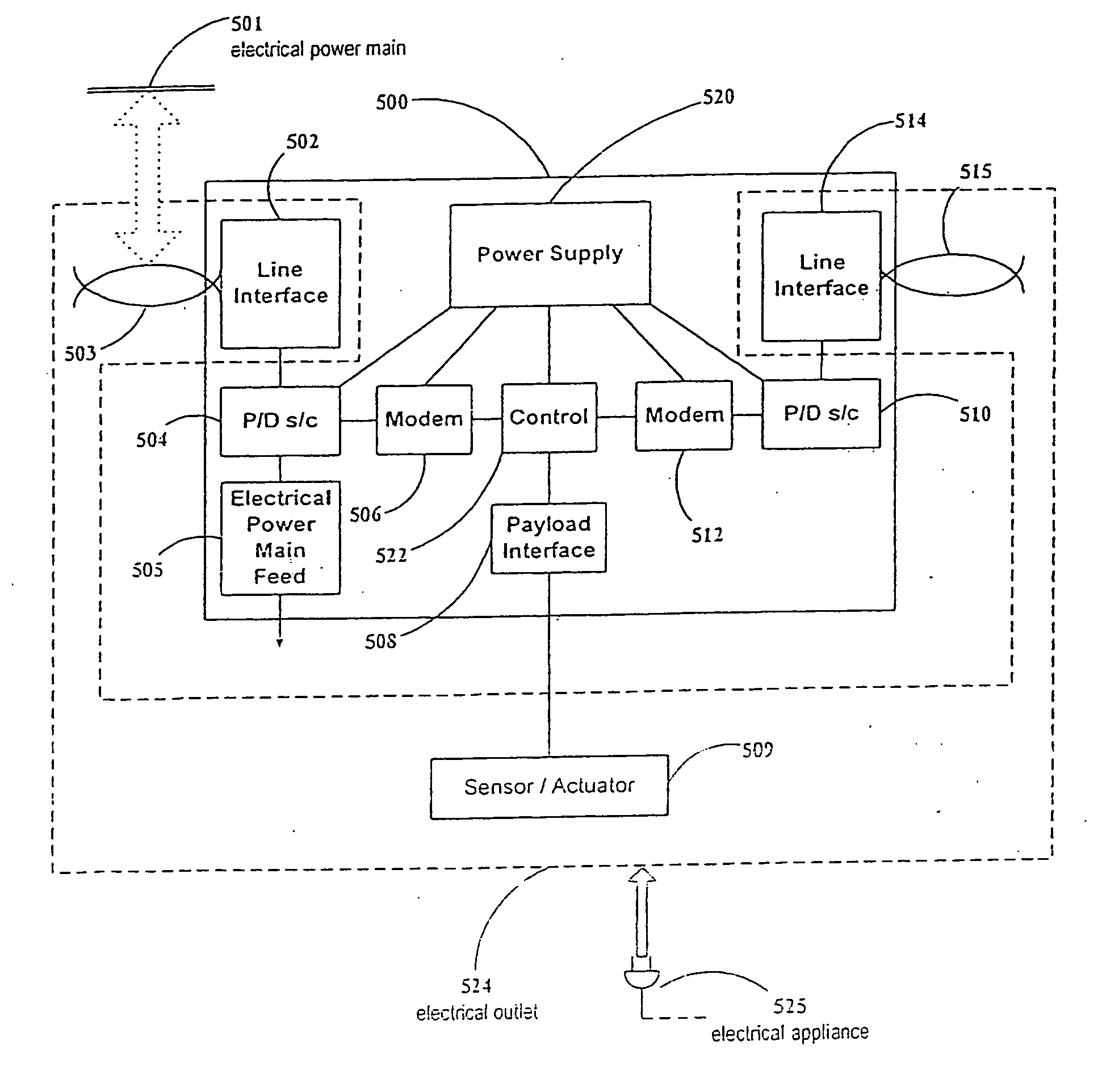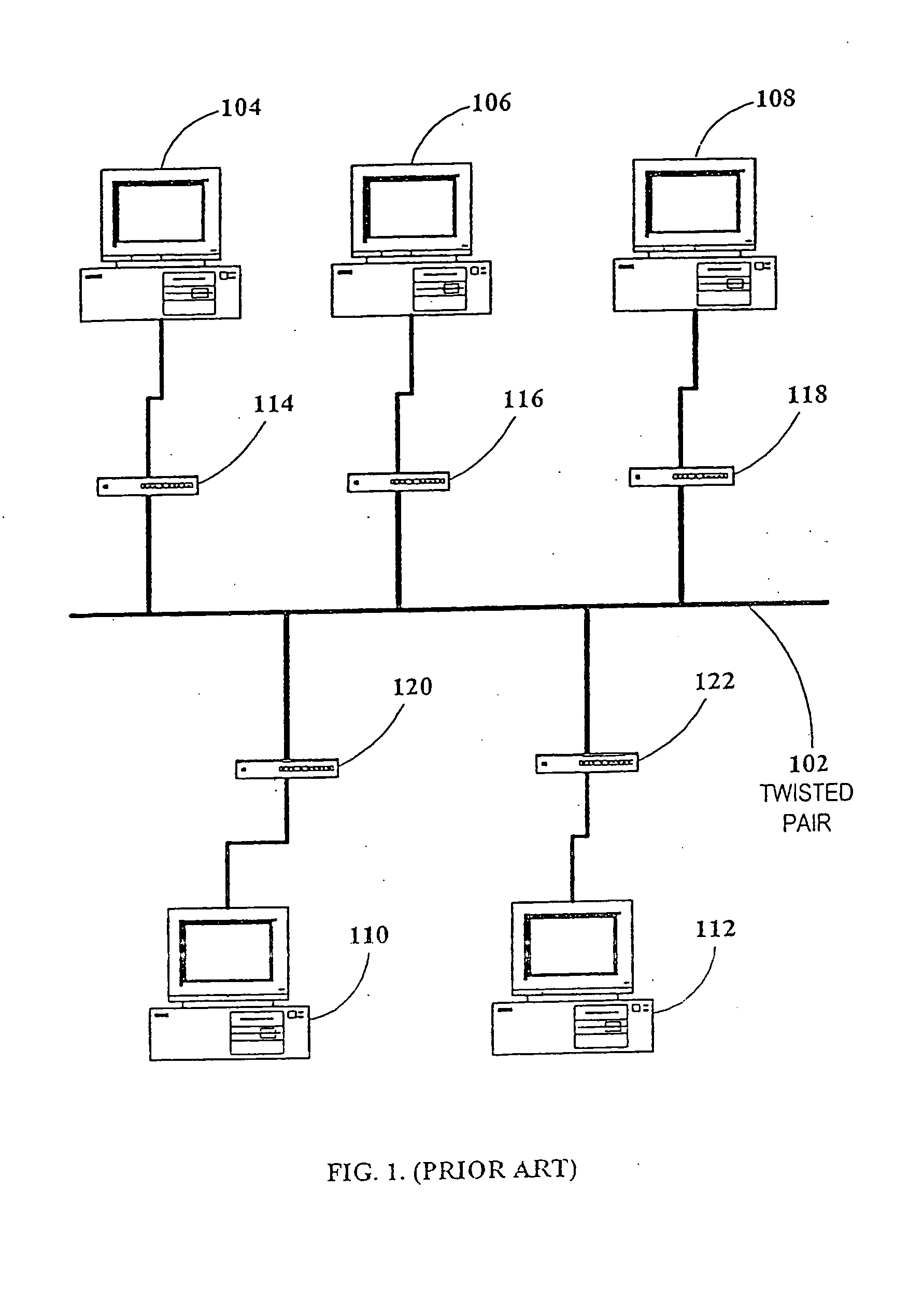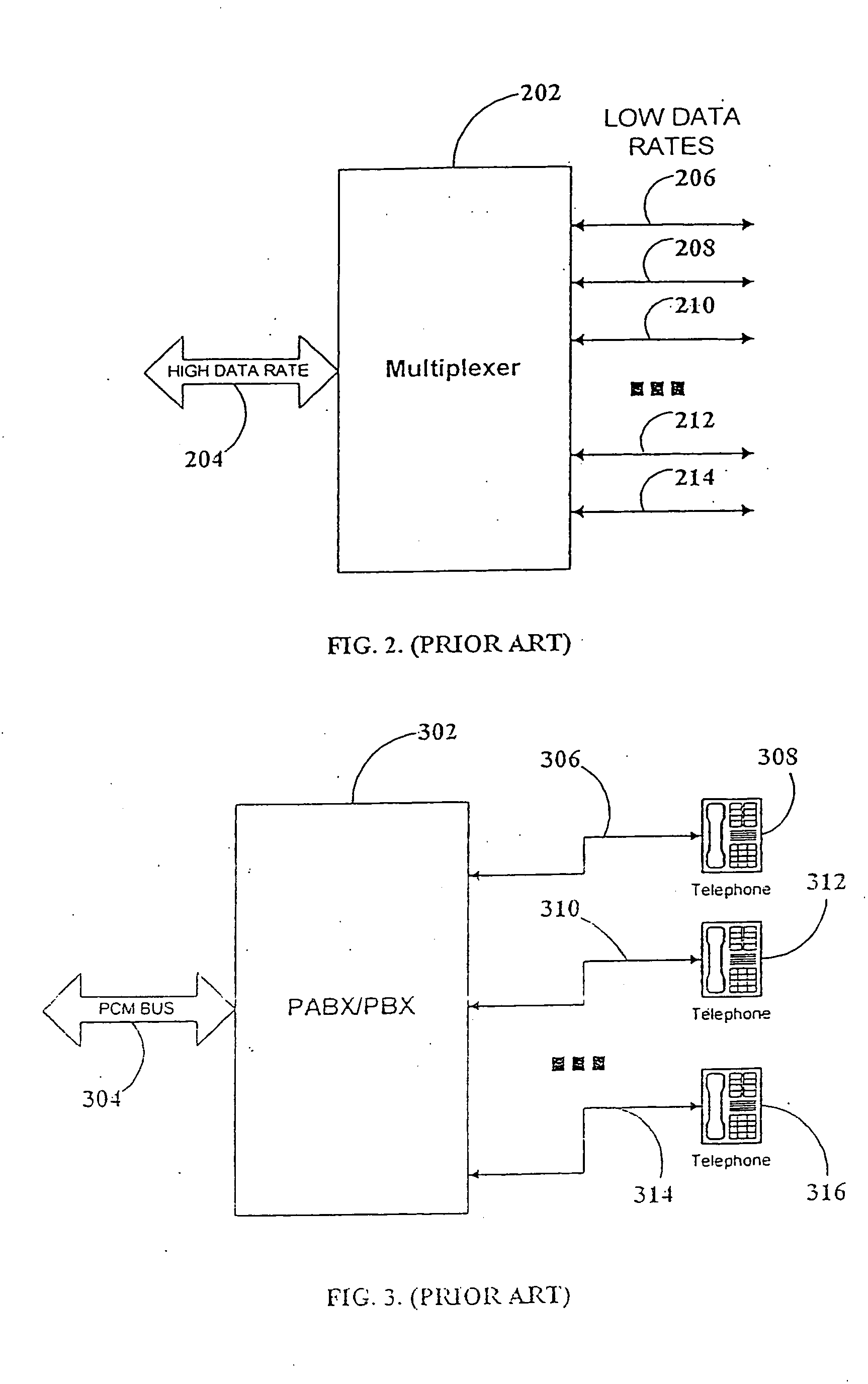Local area network of serial intelligent cells
a technology of intelligent cells and local area networks, applied in data switching networks, power distribution line transmission, powerline communications applications, etc., can solve problems such as the absence of media in electrically-conducting media
- Summary
- Abstract
- Description
- Claims
- Application Information
AI Technical Summary
Benefits of technology
Problems solved by technology
Method used
Image
Examples
Embodiment Construction
[0060] The principles and operation of a local area network according to the present invention may be better understood with reference to the drawings and the accompanying description.
[0061]FIG. 5 is a block diagram of a representative SIC 500 for use in control applications. A first line interface 502 is a first port for connecting to the previous SIC to receive incoming electrical power and local area network data over electrically-conducting medium 503, which may optionally be connected to an electrical power main 501, so that SIC 500 may be powered from electrical power main 501. Line interface 502 may include the connector, fuse, lightning arrester and other protection such as noise filters, etc. The incoming power / data signal is fed to a first power / data splitter / combiner 504, which de-couples the (high frequency alternating current) data signal from the power. Such a power / data splitter / combiner 504 (denoted for brevity in FIG. 5 as “P / D s / c”) can be implemented by methods w...
PUM
 Login to View More
Login to View More Abstract
Description
Claims
Application Information
 Login to View More
Login to View More - R&D
- Intellectual Property
- Life Sciences
- Materials
- Tech Scout
- Unparalleled Data Quality
- Higher Quality Content
- 60% Fewer Hallucinations
Browse by: Latest US Patents, China's latest patents, Technical Efficacy Thesaurus, Application Domain, Technology Topic, Popular Technical Reports.
© 2025 PatSnap. All rights reserved.Legal|Privacy policy|Modern Slavery Act Transparency Statement|Sitemap|About US| Contact US: help@patsnap.com



